Diodes Semiconductor: Understanding the Fundamentals and Applications
In the heart of countless electronic devices, from the simplest gadgets to the most sophisticated systems, lies the unassuming but vital component: the semiconductor diode. Like a one-way street for electrical current, diodes play a crucial role in controlling and shaping the flow of electricity. Understanding these basic building blocks of modern technology illuminates the amazing capabilities that diodes semiconductor technology enables in our everyday lives. This article provides a comprehensive look at diodes and their crucial function in the modern world, from fundamental principles to applications.
What is a Semiconductor Diode?
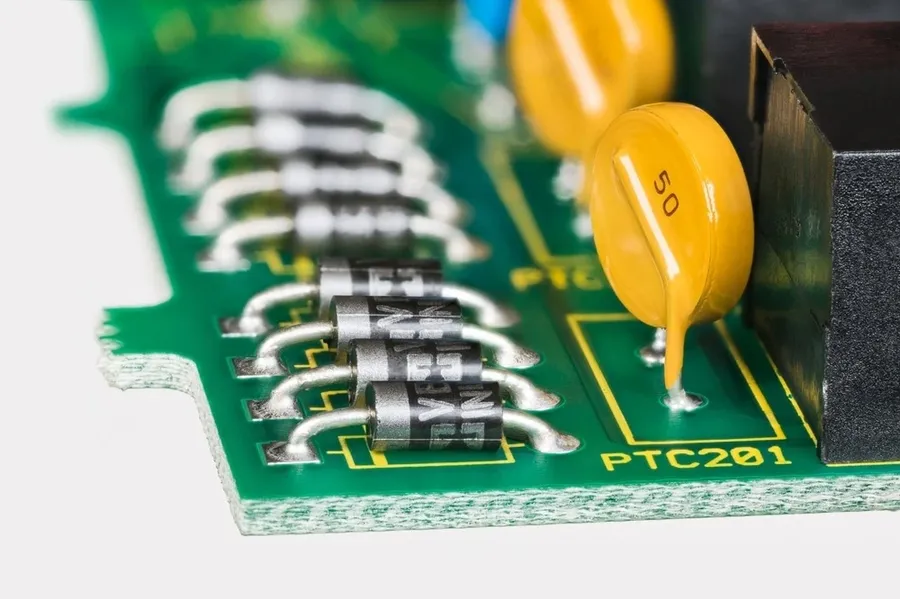
A semiconductor diode is a fundamental two-terminal electronic component characterized by its ability to conduct current predominantly in one direction. This asymmetric conductance, a cornerstone of its functionality, arises from its core structure: a p-n junction formed within semiconductor materials.
The p-n junction, the heart of the diode, is created by joining two types of doped semiconductor material: a p-type material, rich in 'holes' (positive charge carriers), and an n-type material, rich in electrons (negative charge carriers). This junction exhibits a unique property where, under forward bias, it allows current to flow freely, whereas under reverse bias, it significantly restricts current flow, unless a specific voltage threshold (breakdown voltage) is exceeded.
The selection of semiconductor material, such as silicon or germanium, and doping levels directly influence the diode's electrical characteristics, including its forward voltage drop, reverse leakage current, and maximum current handling capability. These properties are crucial for their diverse applications across electronic circuits and systems.
The Working Principle of Diodes
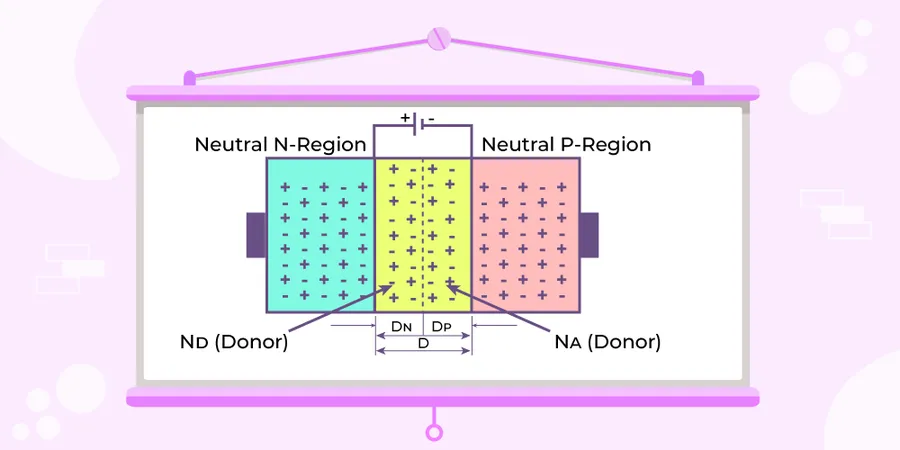
Semiconductor diodes, at their core, function based on the behavior of a p-n junction under different biasing conditions. This junction, formed by joining p-type and n-type semiconductor materials, dictates the diode's ability to conduct current primarily in one direction. Understanding this behavior under forward and reverse bias is key to comprehending diode operation.
Under forward bias, an external voltage source is applied with its positive terminal connected to the p-side and the negative terminal to the n-side of the diode. This voltage reduces the potential barrier at the p-n junction, enabling majority charge carriers (holes in the p-side and electrons in the n-side) to flow across the junction. Consequently, a significant current flows, with minimal resistance. This is the diode's 'on' state.
Conversely, in reverse bias, the external voltage polarity is reversed. The positive terminal is connected to the n-side, and the negative terminal is connected to the p-side. This increases the potential barrier at the junction, widening the depletion region (a zone devoid of free charge carriers). This widening restricts the movement of majority charge carriers across the junction, causing a minimal or negligible reverse leakage current, placing the diode in its 'off' state.
The depletion zone is crucial to diode behavior. It's a region where charge carriers are depleted, creating an electric field that opposes further diffusion of carriers. In forward bias, this region narrows allowing the charge carriers to overcome the potential and contribute to electrical conductivity, whereas in reverse bias the region expands, increasing the barrier and limiting current flow. The precise behavior of the depletion zone and the charge carriers within it determines the performance of the diode under different biasing conditions. This directional conductance is what makes diodes critical in countless electronic applications.
Types of Diodes: An Overview
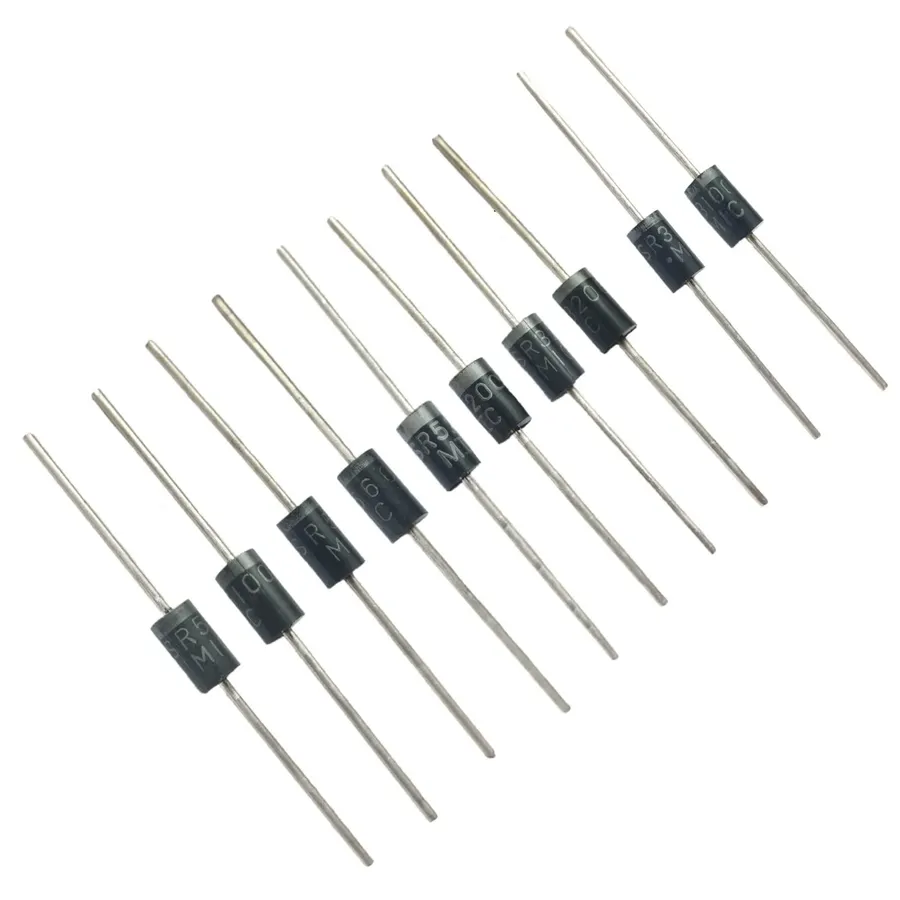
Diodes, fundamental semiconductor devices, are categorized by their function and construction, each type tailored for specific applications. This diversity stems from variations in the doping and structure of their p-n junctions, leading to distinct electrical characteristics and operational capabilities. Understanding these variations is crucial for effective circuit design and application.
- Rectifier Diodes
Designed primarily for converting alternating current (AC) to direct current (DC). They feature a relatively high forward current capacity and are commonly used in power supplies. - Zener Diodes
Specialized diodes that maintain a stable voltage across their terminals when operating in reverse bias. They are used for voltage regulation and protection circuits. - Schottky Diodes
Characterized by a metal-semiconductor junction resulting in a low forward voltage drop and fast switching speed. They are used in high-frequency circuits and power converters. - Light-Emitting Diodes (LEDs)
Semiconductor light sources that emit light when an electric current passes through them. They are commonly used for illumination, displays, and indicators. - Photodiodes
Light-sensitive diodes that generate a current when exposed to photons. They are used in light detection and optical communication.
| Diode Type | Primary Function | Typical Applications |
|---|---|---|
| Rectifier Diode | AC to DC Conversion | Power Supplies, Signal Rectification |
| Zener Diode | Voltage Regulation | Voltage Stabilizers, Overvoltage Protection |
| Schottky Diode | High-Speed Switching | High-Frequency Circuits, Power Converters |
| LED | Light Emission | Lighting, Displays, Indicators |
| Photodiode | Light Detection | Light Sensors, Optical Communication |
Rectifier Diodes: Converting AC to DC
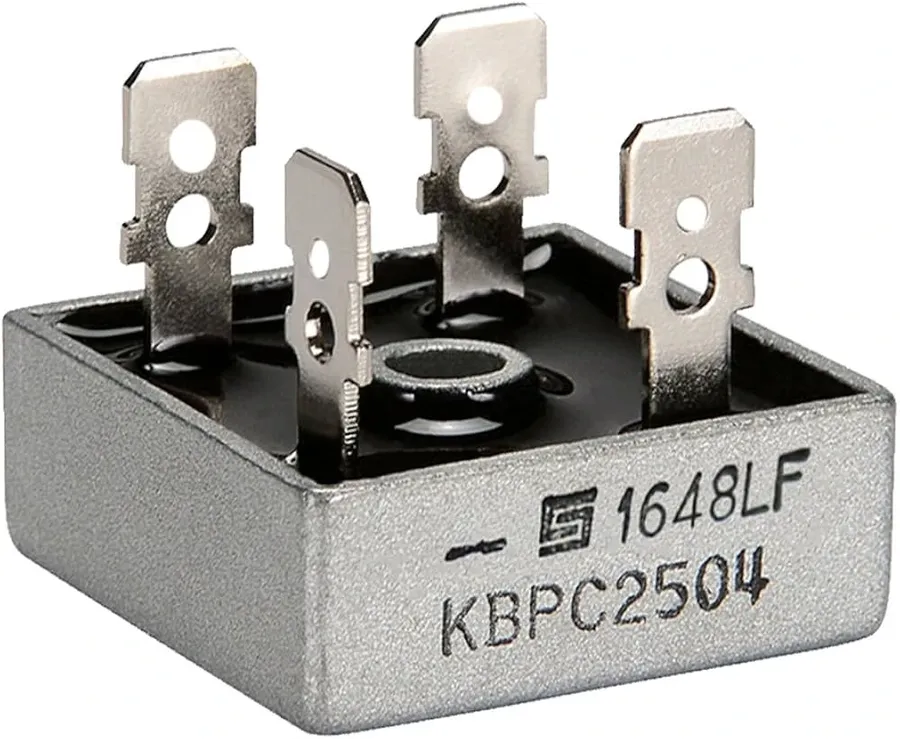
Rectifier diodes are fundamental semiconductor devices essential for converting alternating current (AC) into direct current (DC). This conversion, known as rectification, is crucial in countless electronic applications, forming the backbone of power supplies for most electronic devices. Their ability to conduct current predominantly in one direction is the core property that allows them to perform this function.
The operation of rectifier diodes hinges on their p-n junction. When a positive voltage is applied to the p-side (anode) relative to the n-side (cathode), the diode is forward-biased, allowing current to flow with minimal resistance. Conversely, when a negative voltage is applied, the diode is reverse-biased, blocking current flow. This unidirectional conduction characteristic is what makes rectification possible.
Rectifier diodes are made from semiconductor materials, such as silicon (Si) or germanium (Ge), which exhibit a tunable conductivity that is altered by the application of an external electrical field. The semiconductor material is doped with specific impurities to create the p-type and n-type regions. The p-n junction is the interface between these two regions, where the unidirectional current flow takes place.
| Parameter | Description |
|---|---|
| Forward Voltage Drop | The voltage drop across the diode when forward-biased (typically 0.7V for Si, 0.3V for Ge) |
| Reverse Leakage Current | Small current that flows when the diode is reverse-biased (ideally, this should be zero) |
| Peak Inverse Voltage (PIV) | The maximum reverse voltage the diode can withstand without breaking down |
| Forward Current Rating | The maximum current that the diode can safely handle in the forward direction |
In power supplies, rectifier diodes are often arranged in circuits called rectifiers. These can be half-wave rectifiers, full-wave rectifiers (using a center-tapped transformer or a diode bridge), or more complex configurations. The choice of rectifier depends on the efficiency, output waveform, and cost requirements of the power supply. The semiconductor material in the diode, usually silicon, is selected due to its robustness and high temperature stability making it suitable for rectification in various power levels.
Zener Diodes: Voltage Regulation
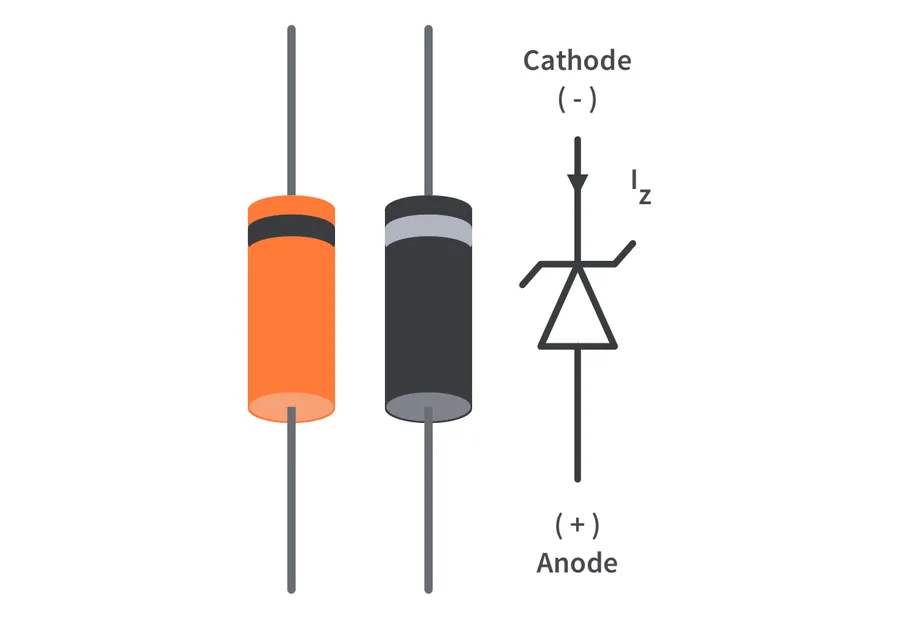
Zener diodes are specifically engineered semiconductor devices that exhibit unique behavior when operated in reverse bias, making them crucial for voltage regulation. Unlike typical diodes, which block current flow in reverse bias, Zener diodes allow current to flow when the reverse voltage reaches a specific threshold known as the Zener voltage, thus enabling the circuit to maintain a stable output voltage.
The key characteristic of a Zener diode is its controlled breakdown voltage. This is achieved by heavily doping the p-n junction, resulting in a narrow depletion region. As the reverse voltage increases, the electric field across the depletion region becomes intense, allowing carriers to tunnel through the junction – this is the Zener effect. This effect facilitates a stable voltage at the breakdown point.
When a reverse bias voltage is applied to a Zener diode, it initially blocks current like a regular diode until the reverse voltage reaches the Zener voltage (Vz). At this point, the diode begins to conduct, maintaining the voltage across its terminals at approximately Vz, regardless of further increases in the reverse bias current. This characteristic is vital for establishing a reference voltage in voltage regulation circuits.
Zener diodes are crucial in voltage regulation, surge protection, and signal clipping. In voltage regulation, they are used in circuits to establish stable output voltages from fluctuating input voltages. For instance, a Zener diode can maintain a constant 5V output even if the input voltage varies between 7V and 12V, which is crucial for consistent performance of circuits.
The selection of a Zener diode for a specific application depends on its Zener voltage (Vz), which can range from a few volts to over 200 volts. Power rating is also an important parameter, indicating how much power the diode can dissipate without damage. It is also important to consider the temperature coefficient to ensure consistent performance across various temperatures.
Schottky Diodes: High-Speed Switching
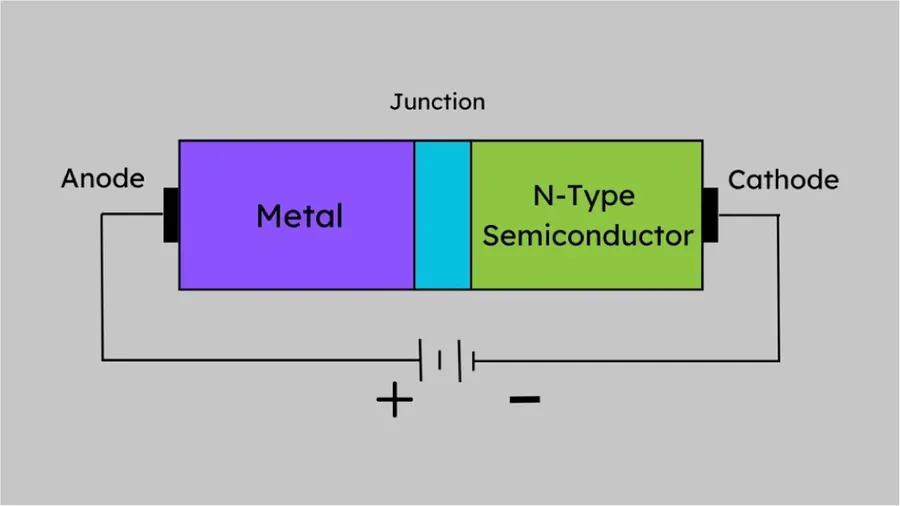
Schottky diodes, also known as hot-carrier diodes, are a unique class of semiconductor diodes distinguished by their metal-semiconductor junction, rather than the typical p-n junction found in other diode types. This construction gives them a significantly lower forward voltage drop and higher switching speeds, making them ideal for high-frequency applications.
The fundamental principle behind the operation of a Schottky diode involves the behavior of majority carriers at the metal-semiconductor junction. When forward biased, electrons from the n-type semiconductor easily flow into the metal, resulting in a low forward voltage drop, typically in the range of 0.2 to 0.4 volts, compared to the 0.7 volts of standard silicon p-n junction diodes. This also minimizes power loss during conduction. Moreover, the absence of minority carrier injection and storage at the junction, significantly reduces reverse recovery time, enabling rapid switching capabilities.
Key applications for Schottky diodes include high-frequency rectification, clamping circuits, and protection against reverse polarity. In power supplies, Schottky diodes enhance efficiency by reducing losses associated with forward voltage drops and switching. They are also extensively used in RF (Radio Frequency) applications, solar power systems, and high-speed digital circuits where their speed is crucial for optimal performance. Specifically, their applications extend to switched-mode power supplies (SMPS), where the low forward voltage drop and rapid switching characteristics help in increasing the efficiency of conversion processes.
The advantages of Schottky diodes are clear: lower forward voltage drop leads to reduced power dissipation and increased efficiency; faster switching times allow for higher operating frequencies and better performance in high-speed circuits; and the absence of minority carrier storage enables quicker transitions, thus improving switching performance. However, Schottky diodes do have their limitations. They typically exhibit higher reverse leakage current compared to conventional diodes and are more temperature sensitive, which can impact performance in high-temperature environments. Additionally, their reverse breakdown voltage is generally lower.
Diodes in Common Applications
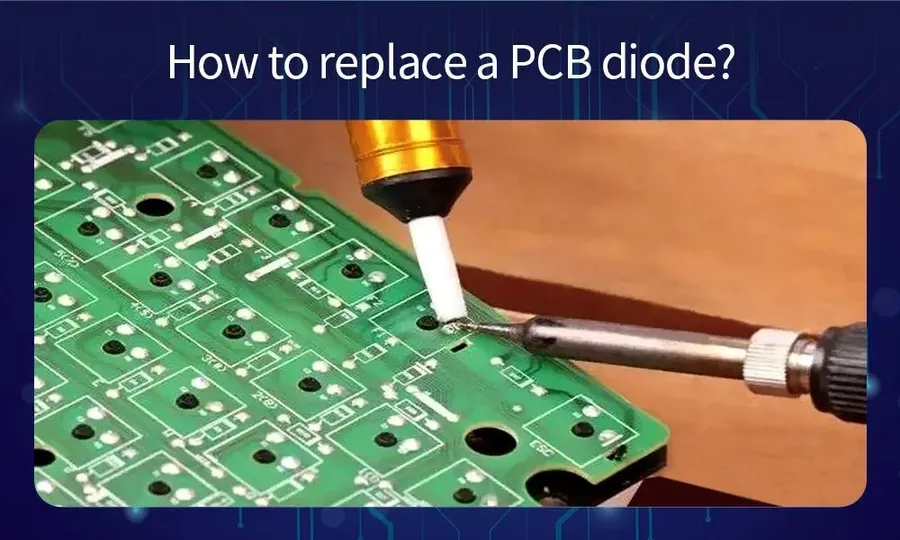
Diodes, fundamental semiconductor devices, are ubiquitous in modern electronics, enabling a vast range of functionalities across diverse applications. Their unique ability to conduct current primarily in one direction makes them indispensable for converting and controlling electrical energy. This section explores some key applications, including those in renewable energy, lighting, and power systems, highlighting how the specific properties of semiconductor diodes are leveraged.
- Solar Cells:
Solar cells utilize specialized diodes (photodiodes) to convert light into electrical energy. These diodes generate a voltage when exposed to photons, forming the basis of photovoltaic systems. The semiconductor material in these diodes is engineered to maximize the efficiency of light absorption and charge carrier separation. - LED Lighting:
Light-emitting diodes (LEDs) are another crucial application, where diodes directly emit light when a current passes through them. Their efficiency, longevity, and compact size have revolutionized the lighting industry. Different types of semiconductor materials are used to produce LEDs with different colors. - Power Conversion Systems:
Rectifier diodes are extensively used in power supplies to convert alternating current (AC) to direct current (DC), which is necessary for most electronic devices. These diodes ensure unidirectional current flow, essential in power rectification. Schottky diodes are preferred in high-frequency power converters due to their low forward voltage drop and high-speed switching capabilities. - Signal Processing:
Diodes, particularly small-signal diodes, are used in signal processing circuits to perform various functions such as signal clipping, clamping, and detection. Their non-linear behavior can be precisely leveraged in circuit designs, for example, in AM radio demodulation. - Protection Circuits:
Diodes are also used in protection circuits. Zener diodes, with their predictable reverse breakdown voltage, can be used as overvoltage protection devices to prevent damage to sensitive electronic components.
Frequently Asked Questions About Semiconductor Diodes
This section addresses common questions about semiconductor diodes, clarifying their purpose, types, and applications, highlighting their critical role in modern electronics. Understanding these frequently asked questions provides a comprehensive overview of diode functionality and usage.
- What is a semiconductor diode and what is its primary function?
A semiconductor diode is a two-terminal electronic component that allows current to flow primarily in one direction, from the anode (positive terminal) to the cathode (negative terminal). Its primary function is to act as an electrical one-way valve, enabling current rectification and signal modulation in electronic circuits. This behavior arises from the unique properties of the p-n junction formed within the semiconductor material. - What is the purpose of a diode in an electronic circuit?
Diodes serve multiple critical functions in electronic circuits. They are used for rectification (converting AC to DC), voltage regulation, signal demodulation, and protection against reverse polarity. Their ability to control the direction of current flow makes them indispensable in a wide array of electronic applications, from power supplies to signal processing. - What are the three main types of diodes, and how do their applications differ?
While numerous diode types exist, three main categories are rectifier diodes, Zener diodes, and Schottky diodes. Rectifier diodes convert AC to DC and are used in power supplies; Zener diodes maintain a constant voltage in voltage regulators; and Schottky diodes have fast switching speeds and lower voltage drops making them ideal for high-frequency applications and power converters. Each type is optimized for specific electrical conditions and applications. - How does a diode achieve its one-way current conduction?
A diode's one-way conduction arises from the p-n junction formed between a p-type (positive charge carriers or 'holes') and an n-type (negative charge carriers or electrons) semiconductor material. When a forward bias (positive voltage on anode, negative on cathode) is applied, charge carriers readily cross the junction, facilitating current flow. Under reverse bias, charge carriers are pushed away from the junction creating a depletion zone with extremely high resistance which blocks current flow. - How do the semiconductor properties of diodes contribute to their functionality?
The semiconductor properties of diodes are critical for their unique functionality. The controlled conductivity of semiconductor materials like silicon or germanium allows for the creation of p-type and n-type regions that form a p-n junction. This junction enables the non-linear behavior that characterizes diodes, making them ideal for rectification, signal modulation, and voltage regulation. The controlled impurity doping levels of the semiconductor materials define the electrical characteristics of the diode. - Can a diode be used as a switch, and if so, how?
While not a direct substitute for transistors in digital logic applications, a diode can act as a switch in simpler applications based on its forward and reverse bias behavior. Under forward bias, it can be considered 'on', allowing current flow with minimal voltage drop, whereas under reverse bias, it is effectively 'off,' blocking current flow. This basic switching ability finds use in certain circuit designs. - What is a 'forward voltage drop' in a diode and why is it important?
The forward voltage drop in a diode is the small voltage needed for a diode to allow current to flow in the forward direction. This voltage is typically between 0.3V and 0.7V for silicon diodes, varying with temperature and diode type. Understanding this drop is crucial in circuit design to predict power consumption and ensure proper circuit operation. It is a fundamental parameter to consider when selecting diodes for any application.
Comparing Diodes: Key Differences
Selecting the correct diode for a specific application requires a thorough understanding of their individual characteristics and operational parameters. This section provides a comparative analysis of key diode types—Rectifier, Zener, and Schottky—to highlight their differences and guide the selection process. The comparison focuses on crucial factors such as forward voltage drop, reverse breakdown voltage, switching speed, and typical applications, all underpinned by the fundamental properties of diodes semiconductor materials.
| Feature | Rectifier Diode | Zener Diode | Schottky Diode |
|---|---|---|---|
| Primary Function | AC to DC conversion | Voltage regulation | High-speed switching |
| Forward Voltage Drop | Moderate (~0.7V for Silicon) | Moderate (~0.7V for Silicon) | Low (~0.2-0.4V) |
| Reverse Breakdown Voltage | High (varies by type) | Specific, controlled breakdown voltage | Moderate to low |
| Switching Speed | Relatively slow | Relatively slow | Very fast |
| Typical Applications | Power supplies, battery charging | Voltage regulation, overvoltage protection | High-frequency circuits, power converters |
| Construction | P-N junction | Heavily doped P-N junction | Metal-semiconductor junction |
| Reverse Leakage Current | Low | Low | Higher than P-N junction diodes |
In conclusion, diodes semiconductor devices are fundamental components that are indispensable to modern electronics. From enabling the flow of electricity in a single direction to regulating voltage, each type of diode performs a specific, critical task. This overview helps in understanding the diversity and importance of diodes semiconductor in all aspects of electronic technology. As technology continues to advance, the role of diodes will only become more vital, ensuring their continuous improvement and integration into new applications.
 AnyPCBA
AnyPCBA